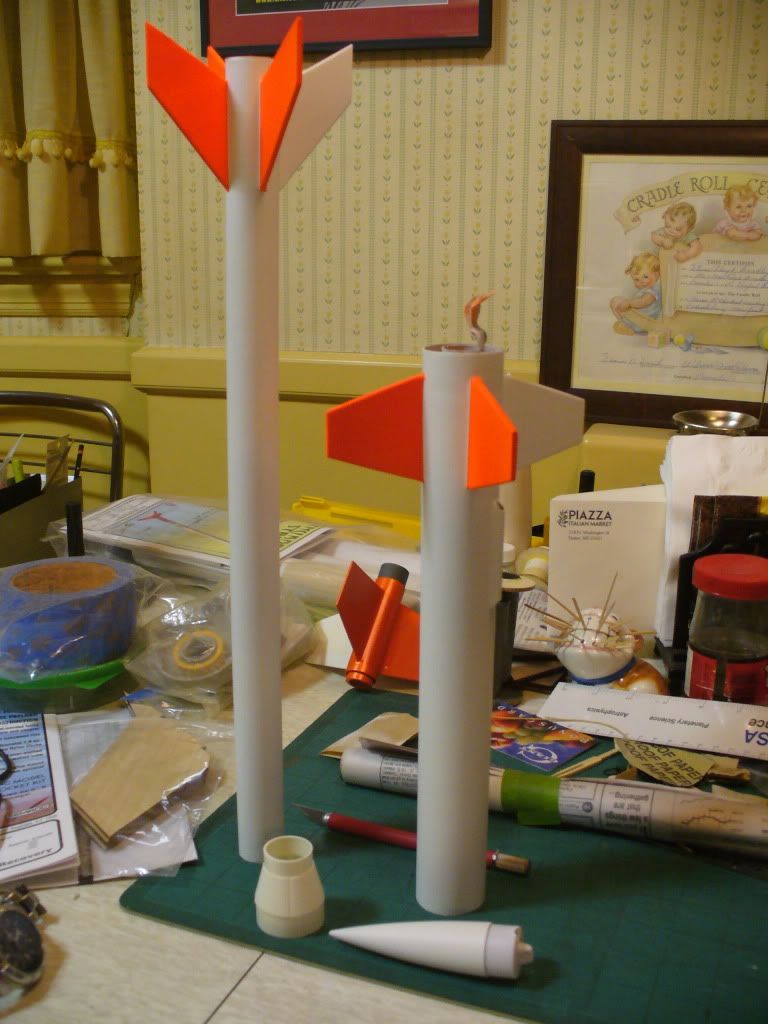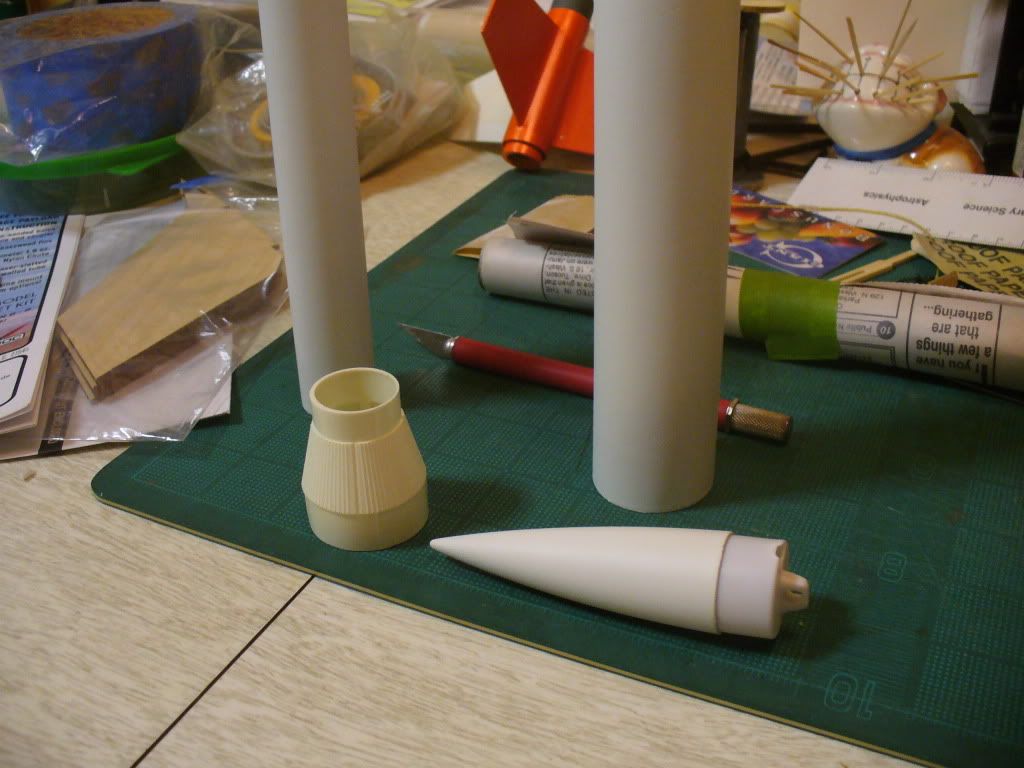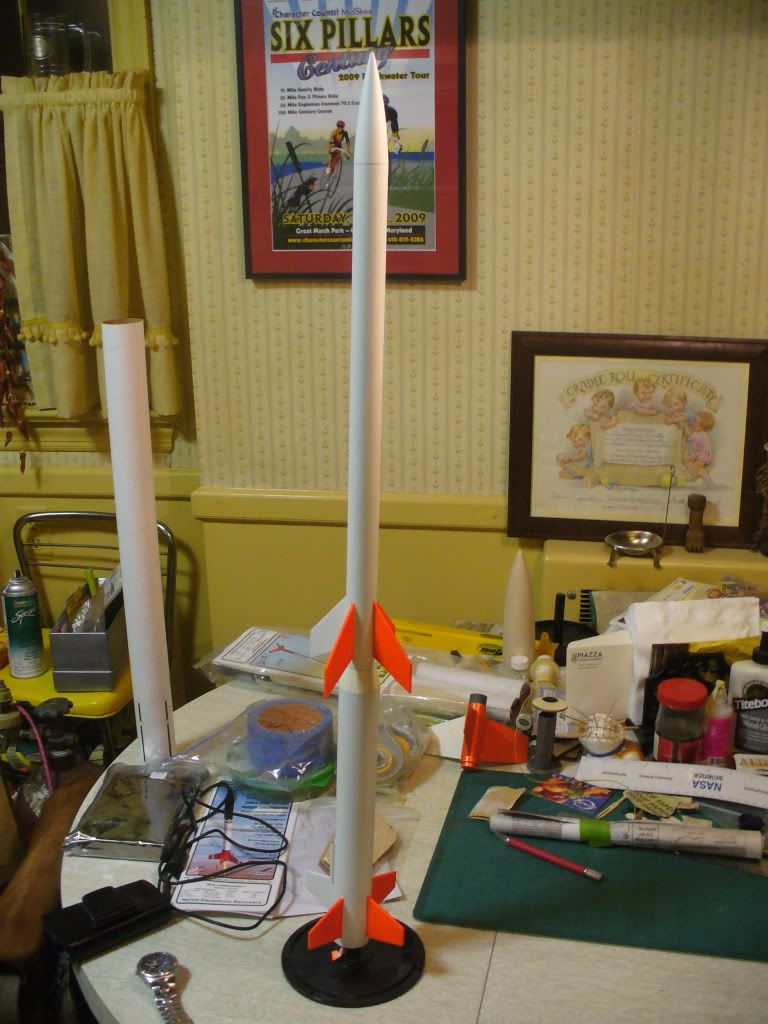Now to re-think the core sample dilemma
Like I said, I simmed just the booster, with a 24mm mount, and it's marginally (about 0.5 caliber) stable. If this were the entire rocket, I wouldn't launch it in this configuration. What's not considered in the sim is the loss of propellant, since we're essentially looking at a coasting ballistic object. The loss of propellant will make the booster even more stable (data sheet says empty casing weighs 16 grams), with just a tad over 1 caliber of stability. OK, now we know the numbers. So what if we make a loop of heavy gauge solder (solid-core stuff like they use for stained glass), and glue it to the top (forward surface) of the bottom centering ring? Using 1.5 oz weight makes the booster almost negative stability. Adding more weight will make the booster actually unstable.
View attachment Terrier-booster-24mm-burned engine.ork
View attachment Terrier-booster-24mm-burned engine weight.ork
Right, so how does this change the stability of the whole rocket? With the addedd 1.5 oz weight, stability of the rocket with engines becomes 0.39 calibers - I wouldn't fly it like this.
View attachment Quest-Terrier-Orion-24mm-Staged tail weight.ork
Adding a 1/2 oz weight just under the nose cone brings the stability back to 1.38 calibers. Not as stable as the original, but I think it would be safe (original was 1.71 cal.). More could be added if needed.
View attachment Quest-Terrier-Orion-24mm-Staged tail and nose weight.ork
How does this additional weight affect performance? Original simms to 1494 feet, the nose/tail weighted version simms to 1365 - a loss of 130 feet. I think that's acceptible, considering you're improving the safety of the rocket (and the nose weight in the upper stage will make it more stable after seperation as well).
So why go through all this bother? I think the two stage sounding rockets and military models should be built as realisticly as possible (using paper, plastic and balsa...). It's also a unique and interesting technical problem. I've got several projects/ideas That became more likely to be built, now that I've satisfied myself I'll get all the parts back - in a reusable form.









